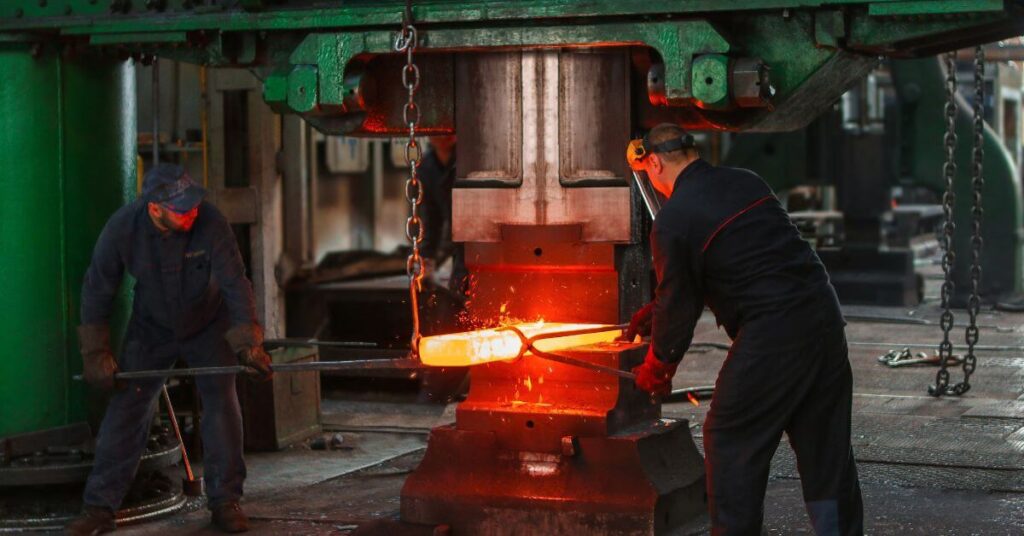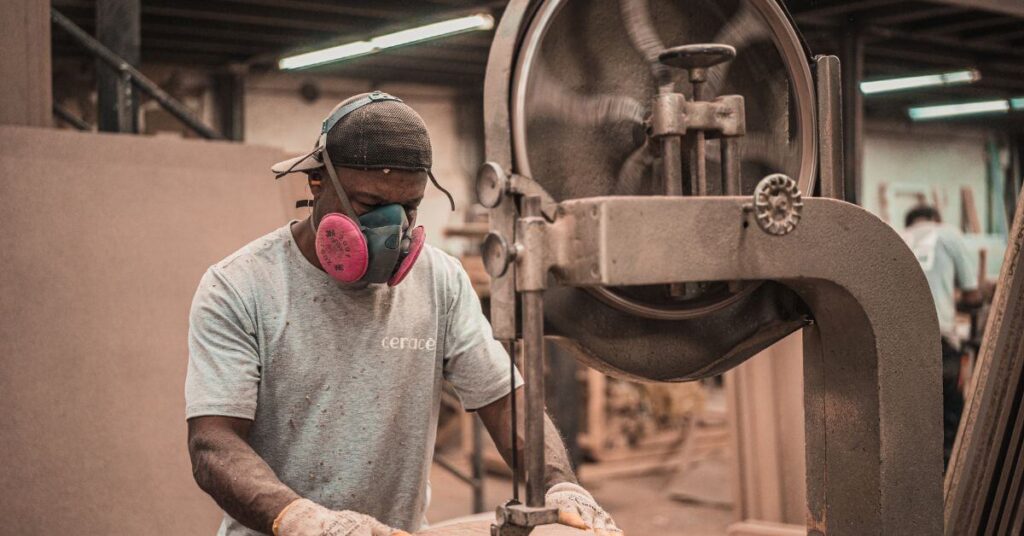Manufacturing processes are the transformative soul behind every product we touch , from the Smartphone in our hand to the car we drive, which combine everything from ancient techniques to technological innovations.
Let’s get to know 50 Examples of Manufacturing Processes.
What are Manufacturing Processes?
Manufacturing processes refer to a series of operations and methods used to transform raw and semi-finished materials into finished products ; These processes can be manual, semi-automatic or automatic and are designed to ensure efficiency, quality and productivity in production.

General Characteristics of Manufacturing Processes
Although each process has its particularities, there are some common characteristics that can be identified in most manufacturing processes:
- Material Transformation: At the heart of any manufacturing process is the transformation of a material, whether changing its shape, properties or appearance.
- Use of Tools or Machinery: Many processes require the use of specialized tools or machinery to carry out the desired transformation.
- Reproducibility: Manufacturing processes are designed to be repeatable, allowing mass production of items with similar characteristics.
- Efficiency: The aim is to optimize resources, such as time, energy and raw materials, to reduce costs and increase productivity.
- Quality Control: It is essential to ensure that manufactured products meet certain specifications and quality standards.
- Automation: Many modern manufacturing processes incorporate robots, computerized systems or automated machinery to increase efficiency and precision.
- Specificity: Each process is designed for certain types of materials and desired results.
- Sequentiality: In complex manufacturing systems, several processes can be sequential, where the output of one process becomes the input of the next.
- Production Scale: Depending on the process, it may be suitable for large scale production (such as foundry) or for small batch and custom production.
- Labor Requirements: While some processes are highly automated and require little human intervention, others still rely heavily on manual labor and specialized skills.
- Cost: Each process has an associated cost that depends on factors such as equipment, energy, materials and labor.
These characteristics may vary depending on the industrial sector and the specific nature of the process, but serve as a general framework for understanding manufacturing.
50 Examples of Manufacturing Processes
Some common examples of manufacturing processes in different industries are:
- Casting: Pouring liquid metal into a mold to form objects.
- Forging: Giving shape to metal by hitting or pressure.
- Machining: Removing material from a part using cutting tools.
- Sintering: Forming a solid from powders using heat.
- Stamping: Using a die and pressure to form materials.
- Welding: Joining metal parts by fusion.
- Injection molding: Introducing molten material into a mold to form parts.
- Extrusion: Forcing material through a hole to form profiles.
- Laminating: Passing material between rollers to reduce its thickness.
- Turning: Rotating a part and using a cutting tool to shape it.
- Milling: Using a router to cut or shape a part.
- Electroerosion: Using electrical discharges to cut or shape a part.
- Compression molding: Using pressure to form materials in a mold.
- Rotational molding: Rotating a mold while introducing material to form hollow parts.
- Blow molding: Using air to expand molten material in a mold.
- Electroplating: Depositing a metallic layer on objects using electricity.
- Planing: Using a planer to level the surface of a piece.
- Drilling: Creating holes in materials using a drill bit.
- Broaching: Making precise cuts using a tool called a broach.
- Grinding: Using a grinding wheel to fine-tune surfaces.
- Etching: Creating marks on the surface of a material, manually or with acid.
- Assembly: Joining different pieces to form a final product.
- Bending: Changing the shape of a material through pressure without breaking it.
- Wire drawing: Reducing the thickness of a material by stretching it.
- Shearing: Cutting material using blades.
- Folding: Giving shape to materials by bending.
- Pressing: Using pressure to form or cut materials.
- 3D printing: Create objects by adding material layer by layer.
- Calendering: Passing material between rollers to shape or finish it.
- Casting: Pouring material into a mold to form hollow pieces.
- Polishing: Smoothing surfaces using abrasives or chemical compounds.
- Vulcanization: Process of hardening rubber using heat and chemical agents.
- Thermoforming: Shaping plastic sheets using heat and pressure.
- Sanding: Use sandpaper to smooth surfaces.
- Threading: Creating threads on parts using taps and dies.
- Powder coating: Apply powder coating and then bake it.
- Stripping: Use acidic solutions to clean metal surfaces.
- Anodizing: Forming a protective layer on metals using electrical processes.
- Stretched: Reduce the size of metal parts by stretching them.
- Drawing: Forming metal parts using a die and pressure.
- Laser cutting: Cut materials using a high-power laser.
- Electro polishing: Polishing and cleaning metal surfaces using electricity.
- Hydroforming: Using high-pressure fluids to shape metals.
- Cold rolling: Reduce the thickness of metals at room temperature.
- Nitride: Introduce nitrogen into the surface of metal parts to harden it.
- Punched: Create a series of holes in materials.
- Water Cutting: Using a high-pressure water jet to cut materials.
- Transfer molding: Introduce preheated material into a closed mold.
- Sandblasting: Using a pressurized sandblaster to clean or etch surfaces.
- Quenching: Heating and then rapidly cooling metal to improve its hardness.

